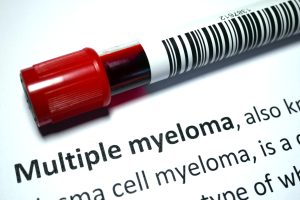
24 RCCA Physicians Named to 2025 Castle Connolly ‘Top Doctors’ List for Exceptional Cancer Care
A cancer diagnosis can be frightening. An individual may worry about how, or if, they will get better. The future becomes unclear and the strain
HIPAA Alert: Potential Data Breach Learn More
Questions on Oncology, Hematology and/or Infusion Clinical Services due to COVID-19 Crisis – CALL 833-698-1623
Important Information for Our Patients Regarding the Coronavirus.
RCCA Providing Area Cancer Patients with Access to Care During Coronavirus Outbreak
RCCA Offering Patients Virtual Visits During Coronavirus Pandemic
Breast cancer can develop over a long period of time, and symptoms may not be present initially, which is why obtaining mammograms to identify early-stage disease is so important.
The medical oncologists/hematologists of Regional Cancer Care Associates (RCCA) have extensive experience treating a variety of cancers, including breast cancer, as well as blood disorders at locations throughout New Jersey, Connecticut, Maryland, and the Washington, D.C., area. We are committed to educating patients so they can become knowledgeable about their conditions and treatment options. Here, we discuss what breast cancer may feel like in the early stages of the disease.

Breast cancer develops when cancerous cells in the breast grow out of control and multiply to form a tumor. Breast cancer can arise in either one or both breasts. While women are more likely to suffer from breast cancer than men – with 1 in 8 women in the United States likely to be diagnosed with the disease at some point in their lives – men can also develop breast cancer.
Breasts are made up of many tissues and structures, and cancer can develop in any of these areas, including:
The lobules and ducts are the areas of the breast where cancer most often develops. However, cancer can arise in other breast tissues and structures, as well, and can then spread elsewhere in the breast – and body – through lymph and blood vessels. Not all cancers that begin in the breast are classified as breast cancer. For example, cancers that originate in lymphoid tissue located in the breast are considered lymphomas. Further, benign (noncancerous) tumors also can develop in the breast. These tumors are usually not a concern but generally are monitored via mammography and ultrasound, with doctors sometimes performing a biopsy to ensure that they are not cancerous. By contrast, malignant (cancerous) tumors must be treated promptly in an effort to eliminate the cancer as soon as possible.
When a patient discovers an unusual lump in her breast, experiences nipple discharge, or has pain in one or both breasts, it’s important to consult a physician without delay so that medical professionals can evaluate the symptoms and make a diagnosis. If breast cancer is found, medical oncologists can conduct further testing to determine the type and stage of breast cancer.
In early-stage breast cancer, many women do not experience any symptoms and are only diagnosed after a routine mammogram screening. In other cases, women may experience one or more signs and symptoms of breast cancer, including:
Every patient is different and can experience varying symptoms. Patients should discuss their symptoms and concerns with their physician to gain an understanding of what the symptoms may mean for their health.
The type of breast cancer a patient has depends on the nature and location of the cancerous cells. The most common kinds of early breast cancer include:
Invasive lobular carcinoma (ILC) is breast cancer that begins in the lobules – milk-producing, sac-like structures in the breast lobes – and then spreads to other breast tissues. This type of cancer can be difficult to identify during regular screening appointments, like mammograms.
Invasive ductal carcinoma (IDC) originates in the milk ducts of the breast and then spreads to other breast tissues. Similar to invasive lobular carcinomas, this type of cancer can spread, or metastasize, through the bloodstream or lymph vessels. IDC is the most common type of breast cancer.
An intraductal carcinoma is a type of breast cancer that is in its earliest stages. Also known as ductal carcinoma in situ (DCIS) It is a kind of ore-invasive or non-invasive cancer that begins in the milk ducts and is contained to those ducts.
Women and men can also develop rare types of cancer of the breast, including angiosarcomas or Paget disease of the breast.
There are many ways women can take a proactive approach to protecting their breast health. One of the most important is to begin receiving mammograms at the appropriate age and to then have regular follow-up mammograms at the intervals determined by their physician. The age at which to start mammograms is based on a woman’s risk for the disease, with women at elevated risk due to factors such as family history beginning mammography screenings at a younger age than women at average risk.
If mammography yields abnormal results, physicians may order further testing, such as:
Untreated, breast cancer can spread and be life-threatening. However, the 5-year relative survival rate for localized breast cancer is 99%, underscoring the importance of early detection.
Treatments for patients with breast cancer vary depending on the stage and type of cancer, as well as the patient’s overall health. Common treatments for breast cancer include:
A mastectomy is a surgery that removes all of a patient’s breast tissue in order to eliminate the cancer and reduce the risk of it recurring. Patients who have a mastectomy may choose to have breast reconstruction surgery following the procedure. Breast reconstruction surgery recreates the breasts using other natural body tissues.
This is another surgical procedure used to treat breast cancer. Instead of removing the whole breast, as occurs with a mastectomy, a lumpectomy removes only a small portion of breast tissue that contains cancerous cells. This can be an option for those with early stages of breast cancer. Mastectomy and lumpectomy often are one component of a comprehensive treatment plan that also includes interventions such as radiation therapy or chemotherapy.
Radiation therapy uses precisely directed high-energy rays to target tumors and cancerous cells. The beams of energy shrink tumors and kill cancerous cells. Radiation therapy is most often used in conjunction with other treatments, such as surgery, to eliminate any remaining cancer cells. Radiation therapy can also treat cancers that have metastasized.
Chemotherapy is the administration of medications that attack cancerous cells. These medications are given to patients through an IV (intravenous) drip or by pill. Chemotherapy is most commonly used with other breast cancer treatments, such as surgery.
Chemotherapy can cause challenging symptoms throughout treatment. Medical oncologists often prescribe medications to help manage symptoms.
Like chemotherapy, targeted therapy uses drugs to attack cancer cells or disrupt their function and reproduction. However, these medications specifically affect malignant cells – typically by binding to receptors on their surface — while leaving healthy cells intact.
Immunotherapy enhances the body’s immune system, empowering it to recognize and destroy cancer cells.
Depending upon the type of breast cancer a patient has, hormonal therapies may be prescribed following initial treatment to reduce the risk of the cancer coming back.
The experienced medical oncologists of Regional Cancer Care Associates provide comprehensive, compassionate care to patients facing a variety of cancers, including breast cancer. To receive the latest cancer therapies at one of RCCA’s 20+ locations in New Jersey, Connecticut, Maryland, and the Washington, D.C., area, or to learn more about the breast cancer treatments we offer, contact us today.
For more information or to schedule an appointment,
call 844-346-7222. You can also schedule an appointment by calling the RCCA location nearest you.

A cancer diagnosis can be frightening. An individual may worry about how, or if, they will get better. The future becomes unclear and the strain

Multiple myeloma (MM) is a rare type of blood cancer that often develops without early symptoms, making awareness of risk factors essential. Regional Cancer Care

A cancer diagnosis can bring a wide range of emotions, from fear and stress to sadness and hope. These feelings are a natural part of

Regional Cancer Care Associates is one of fewer than 200 medical practices in the country selected to participate in the Oncology Care Model (OCM); a recent Medicare initiative aimed at improving care coordination and access to and quality of care for Medicare beneficiaries undergoing chemotherapy treatment.